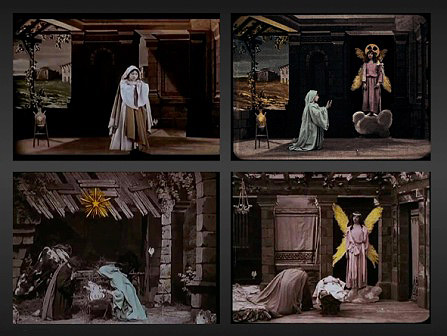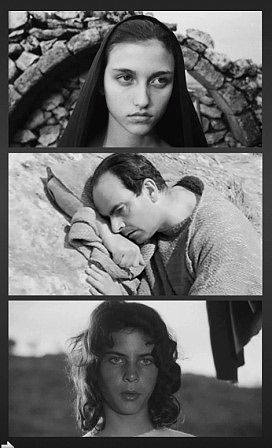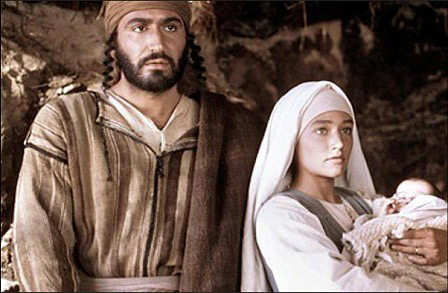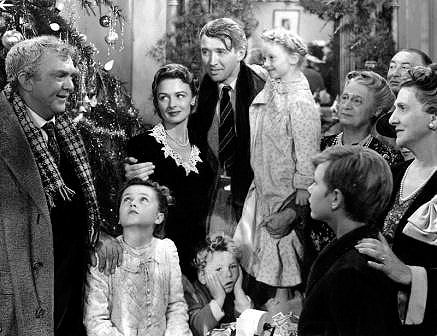15 December
Conferences
CHRISTMAS CYCLE
What does the cinema say? Christmas on the big screen
Ms. Asuncion Domeño Martínez de Morentin
Chair of Navarrese Heritage and Art
The Nativity of Jesus has been very present since the earliest manifestations of Christian art, forming part of the iconography in wall paintings, doorways, capitals, altarpieces, paintings, etc., and has even generated its own representation model which has acquired enormous popularity in some Western countries, such as the Nativity Scene.
Although art has been excluding religious scenes from its production since the 19th century - and especially in the 20th century - in favour of other genres, cinema, a relatively young medium, has paid attention to the figure of Jesus Christ and biblical themes since its origins, in a more or less continuous manner.
The film industry has generated two different types of films around Christmas. On the one hand, we find films that recreate with greater or lesser fidelity the Gospel stories about the life of Jesus, Mary or some of the other characters surrounding this event. On the other hand, cinema has given us numerous stories that sing of the "spirit of Christmas", understood as that time when, together with the coloured lights and the decorated tree, feelings of kindness, fraternity, solidarity... To these we could add a third category, characterised by fantastic stories around the figure of Christmas, which are more frequent in the field of animation.
Films based on Gospel stories
In the century-long existence of cinema, it is estimated that there are around 150 films dedicated to the life of Jesus. Due to the scarcity of news that the Gospel texts provide in relation to the Birth of Jesus, cinema has focused more on the recreation of those events in the life of Christ most illustrated in the sacred books, such as the Passion or the life of Christ itself, in the course of which the Nativity scene is inserted. The Nativity of Jesus, as the absolute protagonist episode of a film, does not appear until recently, specifically until the film Nativity, the story (2006) by the American director Catherine Hardwicke, which actually recreates the story from the Annunciation to the Flight into Egypt.
As in other film genres, the narrativity of the Christological episodes will undergo an important development from the first films in which the scenes are conceived as independent tableaux presented with a theatrical and pictorial sense, and a mise-en-scène imbued with a charming naivety -Brères Lumière and Georges Hatot, La Vie et la Passion de Jésus-Christ ( 1898); Ferdinand Zecca and Lucien Nonguet, Vie et Passion du Christ (1903-1906) - through the narrative continuity seen as early as the 1910s in films such as Christus (1916) by director Giulio Antamoro - shot entirely on location in Palestine and Egypt - to the Hollywood blockbusters of the 1950s and 1960s, where the cinema made a real display of means with the presence of great film stars, the construction of spectacular sets, a huge number of extras and a firm commitment to the employment of four-colour printing and large-format screens. Nicholas Ray and his film King of Kings (1961) is a good example of such blockbusters; based on the story of the books of Tacitus, he is particularly interested in recreating the political history around the time of Jesus' arrival in the world.

Vie et Passion du Christ, by Ferdinand Zecca and Lucien Nonguet, 1903-1906
Precisely, in the 1960s, the Italian director Pier Paolo Passolini, dared to offer a radically different view to that of American cinema in his Gospel according to St. Matthew (1964), in which he used unconventional resources in addition to the particular settings and the presence of non-professional actors who completely broke with the stereotypes of characters that cinema had provided up to that time.

The Gospel according to St. Matthew, by Pier Paolo Passolini, 1964
Franco Zeffierelli refuted this interpretation in 1977 - and others such as Norman Jewison's Jesus Christ Superstar (1973), which the Italian director considered to offer a distorted image of Jesus - with a production for the small screen entitled Jesus of Nazareth, in which he offers us the most complete narration of the life of Jesus up to the present, paying important attention to the whole cycle of the Nativity-Infancy, with a careful staging.

Jesus of Nazareth, by Franco Zeffirelli, 1977
The 1990s awakened the interest of the film industry in the character of Mary and several films were made around the Mother of Jesus, starting with Mary of Nazareth (1995) by the French director Jean Delannoy, followed by others such as Mary, Mother of Jesus (1999) by Kevin Connor, Maria, figlia del suo figlio (2000) by Fabrizio Costa, the previously mentioned Nativity, the story (2006) or the Italian TV production Mary of Nazareth (2012) by Giacomo Campiotti, which leaves a very beautiful image of the birth at Portal in Bethlehem. All of them recreate in detail and with special interest the setting of 1st century Palestine, its landscapes, architecture, customs, clothing... and pay special attention to the episode of the Nativity, although they obtain different results in the definition of the Gospel characters. Mary continues to be present in a new project which is currently in production under the name degree scroll Mary, Mother of Christ by Alister Grierson and is expected to be released in 2016; with a purely Catholic approach , the film has the same scriptwriters who wrote Mel Gibson's version of The Passion of the Christ (2004).

Mary of Nazareth, by Giacomo Campiotti, 2012
Cinema around the "Spirit of Christmas".
Christmas has also inspired another subject of films that, far from the historical event of the city of Bethlehem, tell stories that take place around the celebration of this festivity in contemporary times. Hollywood has been one of the industries that has produced the most films, most of them of poor quality and of an eminently commercial nature. In them, some clichés are repeated, such as snow-covered streets, the façades of houses profusely decorated with lights, the character of Father Christmas calling with his bell and, of course, the "Christmas spirit" that seems to awaken in all the characters human values, solidarity or brotherly love -White Christmas (1954), Christmas Stories (1983), Ghosts Attack the Boss ( 1988) -.
However, Hollywood also has some very worthy works among this subject of films. Possibly the best known of these is Frank Capra's It's a Wonderful Life (1946), a melodrama that offers a hopeful vision of life. Other titles that can be added to this list are Henry Koster's comedies The Bishop's Wife (1947) and George Seaton's Illusion Is the Life of a Man (1947).

It's a Wonderful Life! by Frank Capra, 1946
In Europe, this aspect of Christmas cinema is generally approached from a less commercial dimension. Such is the case of the French film Feliz Navidad ( 2005) directed by Christian Carion, based on a true story that took place at Christmas in 1914, in the middle of the First World War, or the Spanish film Plácido(1961), in which Luis García Berlanga pours an acid criticism on the provincial bourgeoisie of the 1950s. Nor can we forget in our country's filmography comedies such as Juan Antonio Bardem's Felices Pascuas ( 1954) with markedly costumbrist and nerorealist overtones or the everlasting Se armó el belén (1970) by director José Luis Sáenz de Heredia, starring the ineffable Paco Martínez Soria, who continues year after year to accompany us at Christmas, albeit on the small screen.

Merry Christmas, by Christian Carion, 2005
